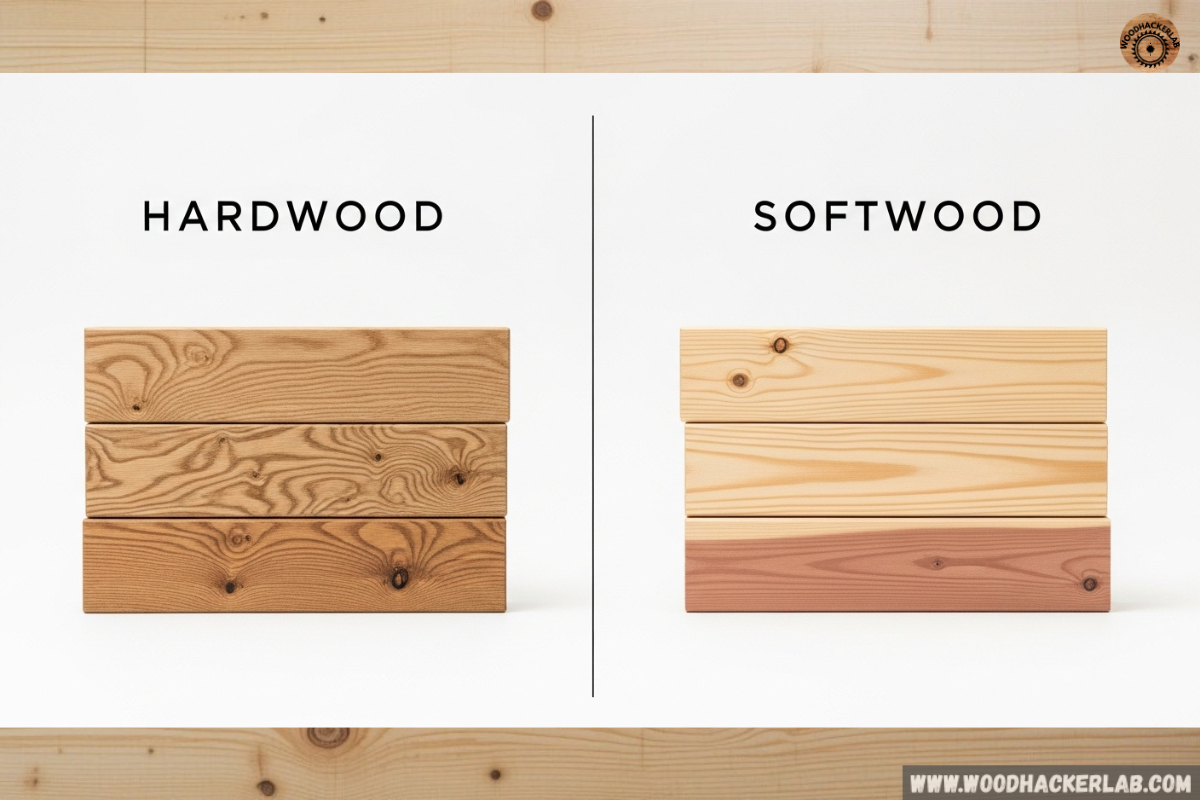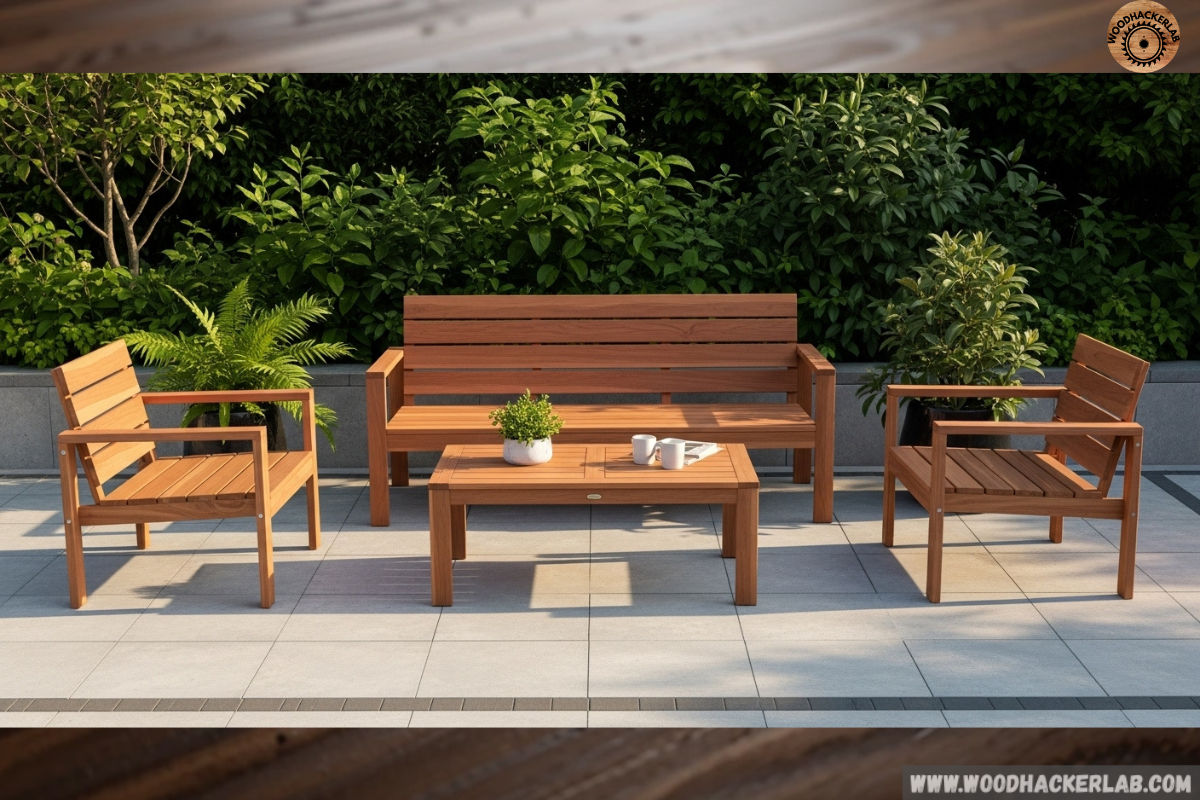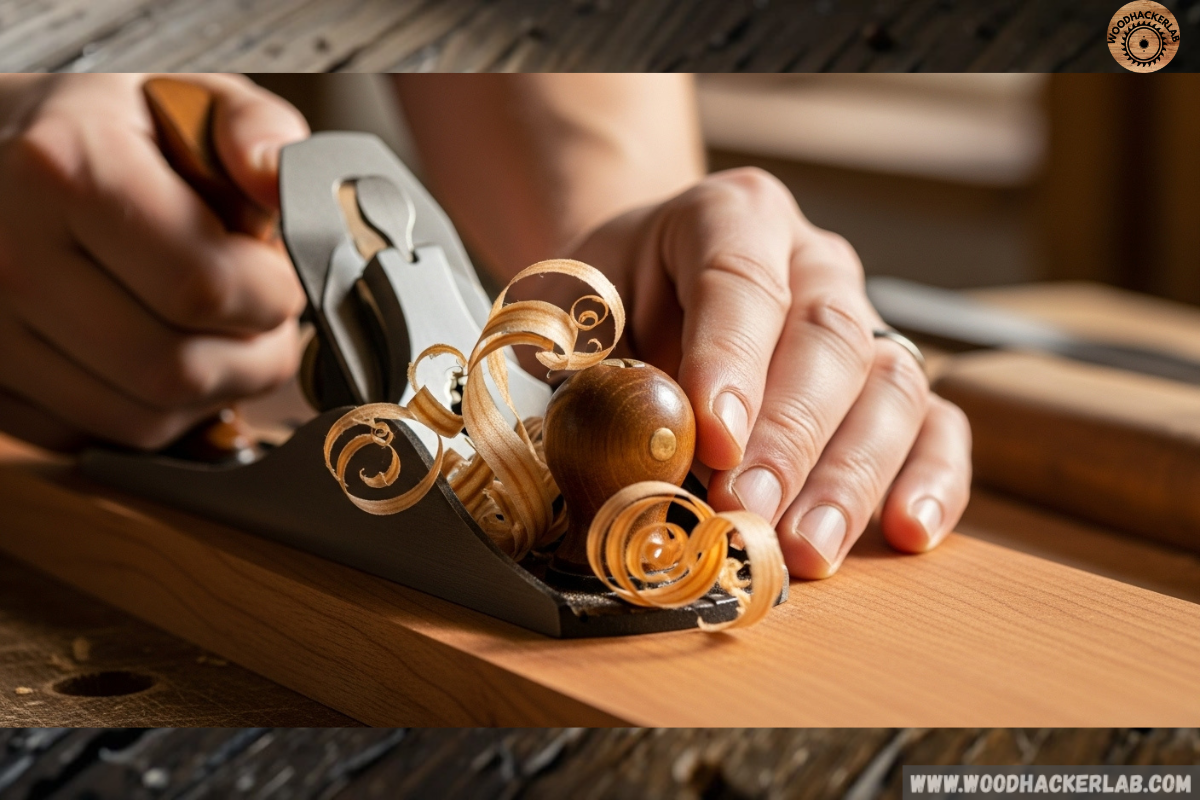Introduction
The success of your next woodworking project doesn't start with the cut—it starts with choosing the right wood for your project. Standing in the lumber aisle, surrounded by dozens of wood types, each with different characteristics, colors, and prices, can feel overwhelming. Should you choose pine or oak? Maple or walnut? How do you know which is the best wood for your specific project?
If you've ever felt paralyzed by these choices, you're not alone. Every woodworker, from weekend DIYers to seasoned professionals, faces this challenge. The wrong wood choice can lead to warping, splitting, or a finished piece that doesn't look or perform as expected. But the right wood choice can elevate your project from good to exceptional, ensuring durability, beauty, and value for years to come. This is why understanding each type of wood is so important.
This comprehensive guide will demystify the process of choosing the right wood. We'll explore the fundamental differences between the different types of wood, examine the most common wood species used in woodworking, and provide you with a practical framework for making confident decisions. Whether you're building indoor furniture, planning outdoor projects like decks, or creating decorative items, this guide will help you select the perfect type of wood with confidence.
{getToc} $title={Table of Contents}
Understanding Wood Types: Hardwood vs. Softwood
Before diving into specific wood species, it's essential to understand the two main types of wood: hardwood and softwood. This fundamental distinction, covering these two categories of wood, forms the foundation of all wood selection and will guide your choices for virtually any DIY projects.
What is Hardwood?
Hardwood comes from deciduous trees—trees that lose their leaves annually. These slow-growing trees produce wood used in many applications that is typically denser, more durable, and often more expensive than softwood. Common examples of this type of hardwood include oak, maple, walnut, cherry wood, and teak. The heartwood of these trees is particularly prized.
- Density: Generally heavier and denser than softwood.
- Durability: More resistant to wear and tear, making it a strong wood.
- Grain Patterns: Often features complex, attractive grain patterns.
- Workability: Can be more challenging to cut and shape.
- Cost: Typically a more expensive wood due to slower growth rates.
What is Softwood?
Softwood comes from coniferous trees—evergreen trees that have needles and cones. These faster-growing trees produce a kind of wood that is generally lighter, less dense, and more affordable than hardwood. Common examples include pine, cedar, fir, and spruce. Many construction projects use this type of wood.
- Density: Generally lighter and less dense than hardwood.
- Durability: Less resistant to wear but can be treated for outdoor use.
- Grain Patterns: Typically features a straight grain.
- Workability: Generally easier to cut, shape, and finish.
- Cost: Typically more affordable due to faster growth rates.
Hardwood vs. Softwood: A Quick Comparison
| FEATURE | HARDWOOD | SOFTWOOD |
|---|---|---|
| Source | Deciduous trees | Coniferous trees (like pine or fir) |
| Density | Higher density | Lower density |
| Durability | More durable wood | Less durable naturally |
| Grain | Often complex patterns | Usually straight grain |
| Workability | Can be challenging | Generally easier to work |
| Cost | More expensive | More affordable |
| Common Uses | Furniture making, hardwood flooring, high-end furniture | Building projects, framing, outdoor projects |
Understanding this basic distinction is crucial because it will help you narrow down your wood options immediately based on your project's requirements for durability, appearance, and budget.
Common Wood Species for Woodworking Projects
Ready to Build Something Amazing?
You've learned about the best woods, now get the plans to use them!
- ✅ Get instant access to 50 step-by-step woodworking plans.
- ✅ Perfect for all skill levels, from beginner to pro.
- ✅ 100% FREE! Start your next project today.
Now that you understand the fundamental difference between hardwood or softwood, let's examine the most common wood species used in woodworking projects. Each has unique characteristics that make it a suitable specific wood for certain applications.
Pine: The Versatile Softwood
Type: Softwood Characteristics: Light color, straight grain, relatively soft, affordable. Best Uses: Construction projects, outdoor furniture, beginner projects. Pros: Budget-friendly, easy to work with, widely available at any home improvement store. Cons: Dents easily, not as durable as hardwoods. Finishing: Accepts stain well but may require conditioner for even absorption.
Pine is perhaps the most commonly used wood for projects and construction. Its affordability and workability make it perfect for beginners and large-scale projects where cost is a concern. While it dents more easily than hardwoods, proper sealing can make it suitable for many applications.
Cedar: The Outdoor Champion
Type: Softwood Characteristics: Reddish-brown color, distinct aroma, naturally resistant to rot and insects. Best Uses: Outdoor furniture, fences, decks, siding. Pros: Naturally weather-resistant, lightweight, attractive appearance. Cons: Softer than many hardwoods, can be expensive. Finishing: Ages beautifully to a silver-gray if left untreated; accepts finishes well.
Cedar's natural resistance to decay and insects makes it the go-to choice for outdoor projects. Its distinctive aroma adds to its appeal, and while it's more expensive than some softwoods, its longevity outdoors makes it worth the investment.
Maple: The Hardwood Workhorse
Type: Hardwood Characteristics: Light color, straight grain, very hard and durable. Hard maple is a prime example. Best Uses: Cutting boards, flooring, furniture, musical instruments. Pros: Extremely durable, fine texture, takes stain evenly. Cons: Can be difficult to work with due to hardness, more expensive. Finishing: Accepts stain and finish beautifully; can develop a golden patina over time.
Maple is one of the most popular hardwoods for both professional and amateur woodworkers. Its durability makes it ideal for items that will see heavy use, like cutting boards and flooring. Its fine, even texture allows for a smooth finish that showcases the wood's natural beauty.
Oak: The Classic Choice
Type: Hardwood Characteristics: Distinctive grain pattern, very strong and durable, medium to high price. Best Uses: Furniture, flooring, cabinetry, barrels. Pros: Extremely strong and durable, attractive grain pattern, ages beautifully. Cons: Can be expensive, can be challenging to work with. Finishing: Accepts stains and finishes well; oak's prominent grain is a sought-after feature.
Oak has been used for centuries in furniture making and remains a popular choice today. Its strength and distinctive grain pattern make it instantly recognizable. White oak is preferred for outdoor applications due to its resistance to moisture, while red oak is commonly used for indoor furniture.
Walnut: The Premium Choice
Type: Hardwood Characteristics: Dark brown color, straight grain, highly prized for its beauty. Best Uses: High-end furniture, gunstocks, decorative items. Pros: Exceptionally beautiful, works well with hand tools, ages gracefully. Cons: Expensive, may develop a lighter color with prolonged sun exposure. Finishing: Beautiful when finished with oils or clear coats; can be stained to achieve various tones.
Walnut is often considered the premium choice for fine woodworking projects. Its rich, dark color and beautiful grain pattern make it highly sought after for high-end furniture and decorative items. While expensive, its workability and stunning appearance justify the cost for special projects.
Cherry: The Elegant Option
Type: Hardwood Characteristics: Pinkish-brown when freshly cut, darkens to a reddish-brown color with age, straight grain. Best Uses: Fine furniture, cabinetry, musical instruments. Pros: Beautiful color that improves as the wood ages, works well with hand tools. Cons: Expensive, can be susceptible to UV damage. Finishing: Develops a rich patina over time; accepts finishes beautifully but may require UV protection for outdoor use.
Cherry wood is prized for its beautiful color that deepens with age, developing a rich reddish-brown patina. It's a favorite among furniture makers for its workability and the elegant appearance it develops over time.
Teak: The Ultimate Outdoor Wood
Type: Hardwood Characteristics: Golden to medium brown, extremely durable, high oil content. Best Uses: Outdoor furniture, boat building, decking. Pros: Naturally resistant to rot and insects, extremely durable, beautiful grain. Cons: Very expensive, can be difficult to glue due to oil content. Finishing: Ages to a beautiful silver-gray if left untreated; accepts finishes well but may require special preparation.
Teak is the gold standard for outdoor woodworking projects. Its natural oils make it extremely resistant to rot, insects, and weather damage. While expensive, its longevity outdoors makes it a cost-effective choice for projects that need to withstand the elements.
Choosing the Right Wood: A Guide for Your Woodworking
With a good understanding of wood types and common species, let's establish a framework for selecting the perfect wood for your project. You'll also want to consider these four key factors when choosing a wood.
1. Project Type and Location
The first question to ask yourself is: where will this project be used? Indoor or outdoor projects have very different requirements.
- Indoor Projects: For furniture and cabinetry, consider appearance and durability. Hardwoods like oak, maple, and cherry are excellent choices. For flooring, you need an extremely durable wood like oak or hard maple. For decorative items, appearance is paramount; walnut and cherry offer beautiful finishes.
- Outdoor Projects: Furniture and structures must withstand weather. Cedar, teak, and white oak are excellent choices. For decks and fencing, you need rot-resistant wood. Cedar and pressure-treated pine are common options.
Pro Tip: For projects that will be partially exposed to elements, consider using more durable wood for the exposed parts and less expensive wood for protected areas.
2. Budget Considerations
Your budget will significantly influence your wood selection. Wood prices can vary dramatically, from affordable pine to premium teak.
- Budget-Friendly Options: Pine and Fir are the most affordable softwoods, perfect for large projects or beginners. Plywood offers stability at a lower cost. Poplar is a hardwood that's relatively inexpensive and takes paint well.
- Mid-Range Options: Oak offers good value. Maple is more expensive but offers superior durability. Cedar is moderately priced for outdoor projects.
- Premium Options: Walnut is expensive but offers unmatched beauty. Teak is the most expensive option but lasts for decades outdoors. Cherry is a premium price for projects that will showcase natural beauty.
Pro Tip: Consider using less expensive wood for structural components (like a beam) and investing in premium wood for visible surfaces. This approach balances cost and appearance effectively.
3. Appearance Requirements
The visual aspect of your project may be the most important factor, especially for decorative items or furniture that will be a focal point in your home improvement project.
- Color Considerations: For a light color, pine, maple, and birch are great. For medium tones, oak and cherry work well. For rich, dark tones, walnut and mahogany add elegance.
- Grain Patterns: For a straight grain, choose maple, pine, or fir. For distinctive patterns, oak and walnut add visual interest.
- Finishing Characteristics: Pine may require a pre-stain conditioner. Maple and cherry absorb stains evenly. Woods like walnut and teak are often finished with clear coats to showcase their natural beauty.
4. Workability and Skill Level
Be honest about your skill level and the tools you have. Some woods are much more forgiving, especially for smaller DIY projects without advanced tools.
- Beginner-Friendly Woods: Pine is soft and easy to work with. Poplar is a relatively soft hardwood. Plywood is stable and forgiving.
- Intermediate Woods: Oak is harder but manageable. Maple is very hard but rewards effort. Cedar is soft but may splinter.
- Advanced Woods: Walnut is expensive, but works well with hand tools. Teak is difficult to glue.
Pro Tip: If you're set on a wood that's beyond your current skill level, consider practicing with a similar but more forgiving wood before using the wood you’re using for the final piece.
Where to Buy Lumber for Your DIY Projects
Once you've selected the right type of wood, you need to know where to buy wood. Different retailers offer different advantages.
Big Box Stores (Home Depot, Lowe's)
Advantages: Convenient, consistent availability of common woods, budget-friendly prices. A great place to find wood products for general home improvement. Disadvantages: Limited selection of premium woods, quality can be inconsistent. Boards in the lumber aisle may be warped. Best For: Common softwoods (pine, fir), basic hardwoods (oak, maple), and plywood.
Specialty Lumber Yards
Advantages: Wide selection of wood species, higher quality boards, knowledgeable staff. The best place to find quality hardwood lumber. Disadvantages: Higher prices, may require membership. Best For: Premium hardwoods (walnut, cherry, teak), large quantities, specialty woods.
Online Retailers
Advantages: Huge selection of rare and exotic woods, delivered to your door. Disadvantages: Can't inspect boards before purchase, shipping costs can be high. Best For: Exotic woods, small quantities, hard-to-find species.
Reclaimed Wood Suppliers
Advantages: Environmentally friendly, unique character. Disadvantages: Can be labor-intensive to prepare, may contain hidden nails. Best For: Decorative projects, rustic furniture, eco-conscious woodworkers.
50 FREE Woodworking Plans
Get Instant Access Below:
Get 50 Woodworking Plans & a 440-Page Guide Book Absolutely FREE!
- ✅ Get access to 50 step-by-step woodworking plans.
- ✅ Download "The Art of Woodworking" – A 440 page guide book.
- ✅ Plus tons of tips, techniques, videos and guides for woodworkers.
100% FREE. Simply click the button below to get started.
DOWNLOAD YOUR PLANS NOWNote: The downloads will be sent to the email you submit. I never meant to share this so grab it before I change my mind.
Conclusion
Choosing the right wood for your project doesn't have to be overwhelming. By understanding the fundamental differences between hardwood and softwood, familiarizing yourself with common wood species, and considering your project's specific requirements, you can make confident decisions that will lead to successful results.
Remember these key takeaways:
- Project Type: Consider whether your project will be indoors or outdoors.
- Budget: Balance cost with quality, using premium woods where they matter most.
- Appearance: Select wood that will achieve the visual effect you're aiming for.
- Skill Level: Be honest about your abilities and choose woods that match your experience.
The right wood choice will not only make your building process smoother but will also ensure your finished project looks great and lasts for years to come. Whether you're building a simple bookshelf or an outdoor dining table, starting with the right wood is the first step toward woodworking success.
Ready to put your knowledge into action? Download your 50 FREE woodworking plans today and start creating beautiful projects with the perfect type of wood!
.jpg)


